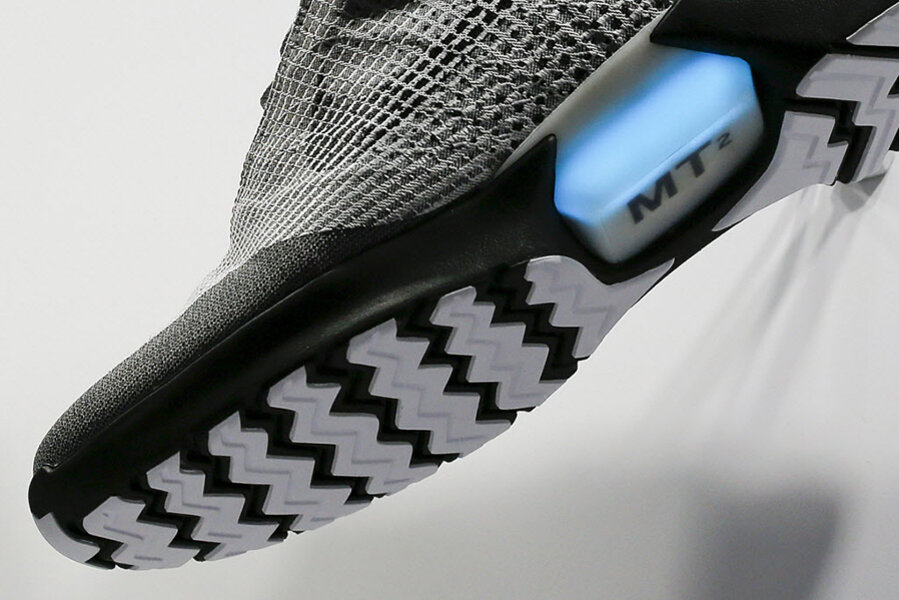Why Nike is making most shoes from manufacturing waste
Loading...
As Nike moves toward its sustainability goals, picking up a new pair of shoes might mean getting part of an old pair, too.
On Wednesday, the company said that 71 percent of its footwear now contains materials made from waste products from its manufacturing process, including ground-up pieces of old shoes and scraps from the company's factories.
"From an impact standpoint, materials matter the most. In fact, in one pair of Nike shoes, 60 percent of the environmental impact comes from materials," wrote Mark Parker, the company's chief executive, in a letter announcing the release of Nike's latest sustainability report on Wednesday.
The effort is part of a broader push toward a series of ambitious environmental goals.
In 2010, the company pledged to stop buying carbon offsets. Instead, Nike said it would work towards reducing its own emissions, including the eventual goal of a "closed loop," eliminating all waste products from its manufacturing process.
The company says that between 2011 and 2015, it successfully reduced its carbon emissions by 18 percent for each unit it ships.
Using recycled material is a key part of that effort.
"I never knew how excited I could get about waste," Hannah Jones, Nike's chief sustainability officer, told The Huffington Post. "If the world were to reframe how it thinks about waste, it is the delta between the ambition we have collectively to get to a low-carbon world and where we are now."
The company's Nike Grind material reuses scraps and old shoes by slicing them into three parts, then printing them into rubber bits, foam, or a fluffy fiber, the Huffington Post reports.
In addition to using the materials in its own designs, the Oregon-based apparel giant is also selling them to outside buyers. They are then used to line running tracks, playgrounds, gym floors, and carpet underlay.
The company has also been working to reduce its water usage through a special waterless dye process, which Nike says has saved more than 5 million gallons of water.
During the Paris climate talks last year, which led to a pledge to curb global emissions signed by more than 170 countries, rival Adidas introduced its own prototype of a 3-D printed sneaker made partly of recycled ocean plastic and fishing nets.
In the 1990s, Nike became a target of harsh criticism over its labor practices, including the use of child labor, but the company has since made labor issues a key part of its sustainability effort.
"The worker is the most important element in any factory," Ms. Jones told OregonLive. "At the end of the day, this is about transforming attitudes. If you get it right, policing [factory conditions] actually becomes less important."
Even as its sales have continued to increase, Nike says it has reduced the number of factories it works with by 24 percent.
For example, it has not contracted with factories in Myanmar, and has limited operation in Bangladesh due to concerns about working conditions.
Eighty-six percent of factories it contracts with now meet its minimum requirements for sustainability and investment in workers, the company reports.
Eventually, Nike says it hopes to halve its environmental impact in a move toward a so-called "circular economy." This concept, which is intended to emulate nature, involves reforming a company's business model completely to recycle waste and eliminate pollution.
"We've set a moonshot challenge to double our business with half the impact," Jones says in a statement. "It's a bold ambition that's going to take much more than incremental efficiency – it's going to take innovation on a scale we've never seen before."







